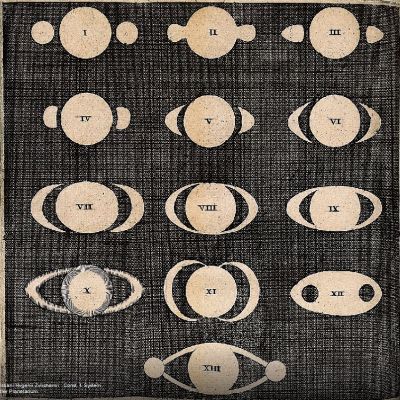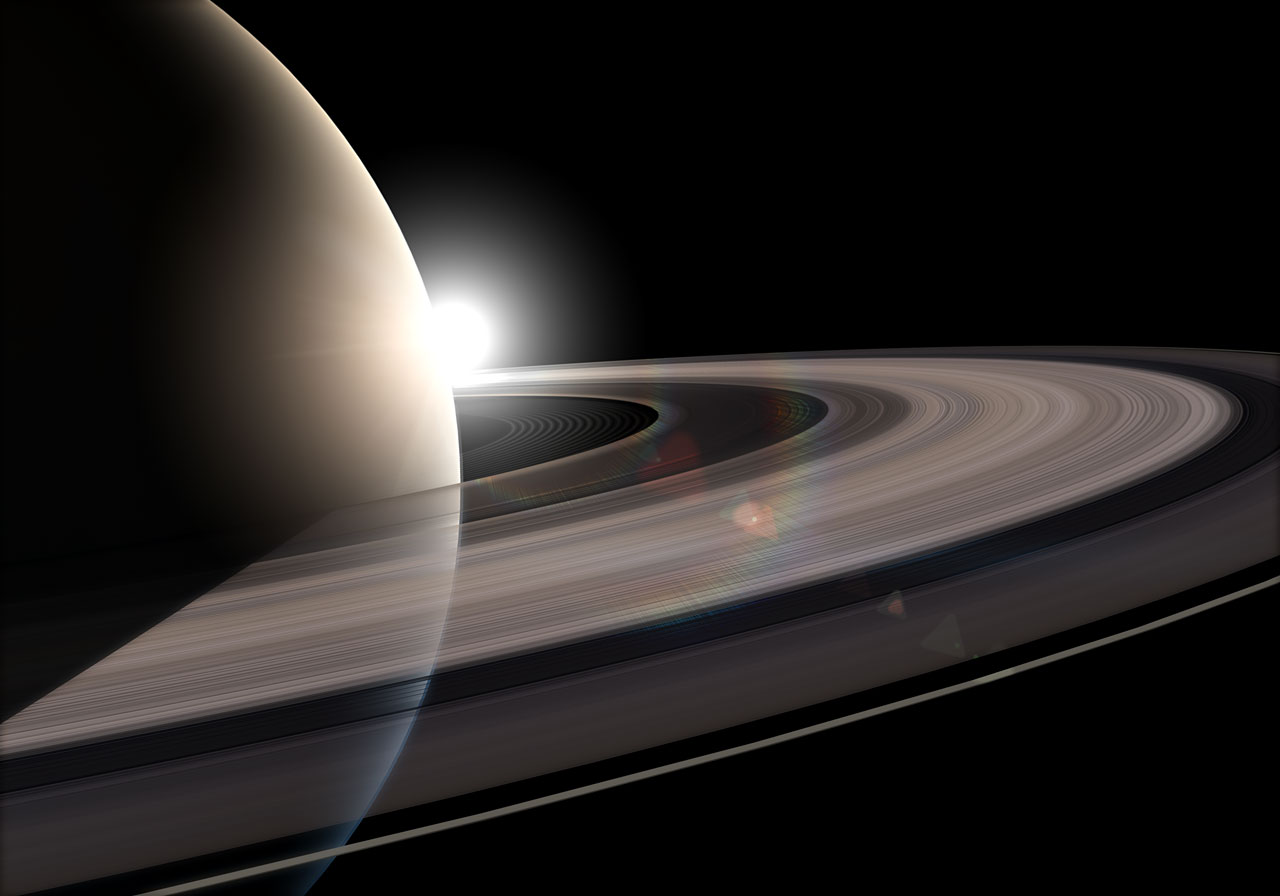Pierre-Yves Longaretti
pierre-yves.longaretti
at
univ-grenoble-alpes.fr
pierre-yves.longaretti at
inria.fr

Menu:
Planetary ring dynamics

Huygens, 1659: Systema Saturnium
Various early telescope views of Saturn, from different observers, in the decades preceding Huygens's publication
Saturn's rings probably constitute the oldest known example of an astrophysical disk, and has long been a focus of attention in planetary science, as exemplified by this series of drawings. This interest was pursued for its own sake, but also mor recently for the possible insights this might provide in the understanding of the dynamics of other disks, most notably protoplanetary disks. Indeed, the Saturnian system has by now been surveyed twice. First by the two Voyager probes in the 1980s, and more recently by the Cassini probe which stayed on site for more than a decade, providing us with a rich harvest of data on the planet, its rings and its complex satellite system.
The rings and the satellites form in fact a largely coupled system, the satellites creating a number of features in the rings (waves and gaps being the most notable) and as a consequence, exchanging angular momentum with the rings. If for the largest satellites, angular momentum exchanges and subsequent orbital evolution is controlled by tides with the planet, the orbits of the smallest ones, which also generally lie closer to the rings (some finding their origin in the rings themselves) expand mostly due to the interaction with Saturn's main rings.

Saturn and its rings, with the Sun in the
background, as seen by the Cassini probe.
Source: NASA
Source: NASA
Ring dynamics has long been a research subject of mine. However I had left the field for more than twenty years before returning to it for the sake of the writing of a theoretical review chapter on ring dynamics. This work has recently appeared in the Planetary Ring Systems book published in 2018 by Cambridge University Press. Since then I have been involved in providing theoretical input in the analysis of the ring structure conducted by colleagues, and in as yet unpublished reinvestigations of old problems of ring/satellite dynamics in light of the constraints brought by the Cassini data.
Recent
articles
French, McGhee-French, Nicholson, Hedmann, Rappaport, Marouf, Longaretti, Hahn (2019). Unusual One-Armed Density Waves in the Cassini Division of Saturn's Rings. Icarus, 339, 113600.
Longaretti (2018). Theory of Sharp Edges and Narrow Rings. In Planetary Ring Systems, Tiscareno and Murray, eds. Cambridge University Press.
French, McGhee-French, Nicholson, Hedmann, Rappaport, Marouf, Longaretti, Hahn (2019). Unusual One-Armed Density Waves in the Cassini Division of Saturn's Rings. Icarus, 339, 113600.
Longaretti (2018). Theory of Sharp Edges and Narrow Rings. In Planetary Ring Systems, Tiscareno and Murray, eds. Cambridge University Press.